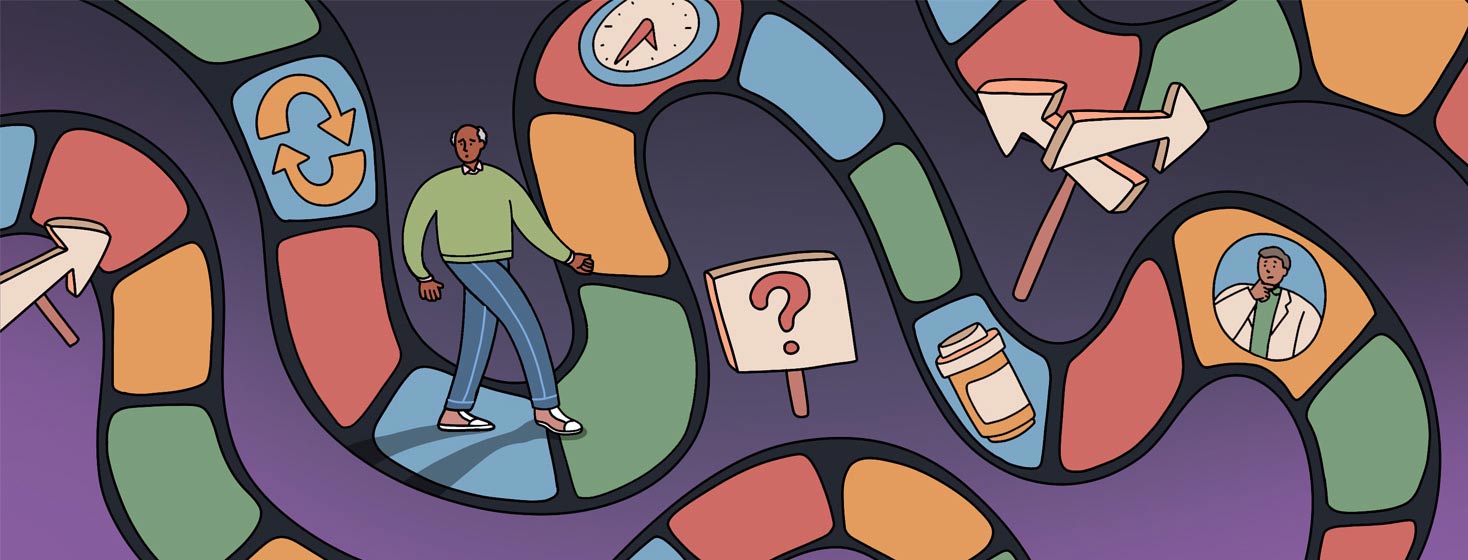From 509 to <0.1: My Prostate Cancer Experience with the STAMPEDE Trial
Clinical trials offer an opportunity to obtain tomorrow's medication today. Trials are research studies that test medical, surgical, or behavioral interventions in humans. Researchers conduct trials to determine whether a treatment is safe and effective for humans.1
My experience in a clinical trial
In 2012, I enrolled in a clinical trial program for stage 4 prostate cancer. This was the STAMPEDE trial. I was allocated "Arm G" of the program, comprising abiraterone (Zytiga) and leuprorelin (Prostap.) Over a 6-month period, these medications reduced my presenting PSA, from 509 to less than 0.1. It has remained undetectable for over 11 years, as of my writing this. Medical professionals consider me a super responder; others a walking miracle. It has now been over a decade since abiraterone and Prostap were authorized in the United Kingdom.
Dispelling myths and misconceptions
Since then, I have become the voice and face of hope for many patients suffering from this disease. However, the disease disproportionately affects Black men, with 1 in 4 at risk. Compared to 1 in 8 caucasians and 1 in 13 in men of other ethnicities.2
Now as an advocate, I write honest and open accounts of my experience. These are intended to dispel disease myths and misconceptions. Additionally, I have used my experience to engage with different cultures, ethnic groups, researchers, and scientists. Now I would like to see more young men, educated about prostate cancer.
The emotional impact of prostate cancer
For over 18 years I have dealt with cancer's mental and emotional impact. My mother's breast cancer illness and eventual loss prepared me for my journey. The first step I took was to tell my family the bad news and answer their questions.
My children shed tears, but I did not. Tears were yet to come from me. When they finally broke, they came unexpectedly. Where disease had set in, depression and suicidal thoughts soon followed. Added to this was the inability to no longer walk 30 or 40 meters before resting.
The disease spread
The disease spread throughout my body, wreaking havoc and the side effects began quickly. I struggled with swollen ankles, loss of thigh muscle mass, loss of libido, fatigue, vision impairment, and neuropathy pain.
There were a few times I became dizzy and disoriented. On one occasion, I lost the ability to speak, and my poor wife suspected a stroke. Occasionally, I could be found crumpled on the floor after collapsing. I had lost muscle function in my back. This affected the lower half of my body, including both legs. On another occasion, whilst waiting for an ambulance due to severe back pain, I collapsed multiple times.
Side effects of my treatment
Any treatment may cause severe or unexpected side effects. Based on what was known about my treatment, my research team informed me of the anticipated side effects. However, my preliminary research suggested that experimental treatments might harm me. However, at this stage, I felt I had nothing to lose due to my disease severity. I knew that in phase 1 or phase 2 trials, treatments had been carefully researched in the laboratory before being given them.
I was fully aware that the risk of harmful side effects was lower in phase 3 trials. But my vulnerability still became exposed, reducing me to tears as the drugs took hold. For the first time, my wife and children saw me reduced to tears, due to the crippling pain. As my medication dosage increased to combat the pain and manage my condition, my body reacted negatively.
My musculoskeletal system became limp, saggy, and unsightly. Moreover, the clock was ticking fast. I had to do something so I turned to fitness to reclaim my life. Fitness included, swimming and hiking with a heavy backpack to strengthen my legs and abdomen. My phenomenal wife provided me with support, strength, care, love, and attention through it all. Every day she walked with me, holding my hands through this horrendous ordeal. These were the early days.
Eventually I started to feel stronger
During the first 7 months, my life revolved around regular hospital visits for PSA tests, X-rays, CT, PET, and MRI scans. Appointments were often lengthy, involving a greater part of the day. The 3-hour round-trip journey from my home to the hospital was not without its issues. As we drove along, our car would often encounter potholes or bumps in the road. The jerking-ditching motion would cause me to scream out in pain. This was specifically due to the cancer in my lower back area.
By October 2012, my overall condition had become manageable. I felt physically and mentally stronger. I owe so much to my wife for all she had done to get me through. Stride for stride she walked with me. Those who support cancer patients are often forgotten and receive no accolades for all they endure. I am grateful for my life and my wife. My cancer journey started ugly, turned terrible, and got better.

Join the conversation